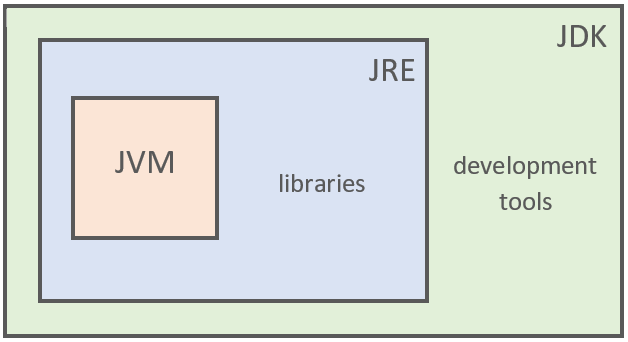Java, one of the most widely used programming languages, provides the tools and environment required for developers to create, test, and execute Java programs. At the heart of Java development are two essential components: JDK (Java Development Kit) and JRE (Java Runtime Environment).
While these terms are often used interchangeably, they serve different purposes and cater to distinct stages of the software development lifecycle. Understanding the differences between JDK and JRE is vital for every developer, especially when configuring Java environments or troubleshooting runtime and development issues.
In this article, we’ll delve into the roles, features, and key differences of JDK and JRE, along with practical insights into when and why you should use each.
What is JDK?
JDK (Java Development Kit) is a software development kit that provides all the tools and libraries necessary for developing Java applications. It is designed for developers who need to write, compile, and debug Java code.
Key Components of JDK
- Java Compiler (
javac)
Converts Java source code (.javafiles) into bytecode (.classfiles) that can be executed by the JVM (Java Virtual Machine). - Java Debugger (
jdb)
Helps developers debug and troubleshoot Java applications by identifying errors during development. - Java Doc Generator (
javadoc)
A tool for generating API documentation from Java source code comments. - Development Tools
Includes tools for packaging, monitoring, and managing Java applications, such asjar,jconsole, andjavap. - JRE (Java Runtime Environment)
JDK includes JRE, which allows the execution of Java applications.
When to Use JDK
- When writing and compiling Java code.
- During application development and testing.
- For building Java-based frameworks, APIs, or libraries.
What is JRE?
JRE (Java Runtime Environment) provides the necessary environment to run Java applications. It is designed for users and end-users who want to execute Java programs without the need to develop or compile them.
Key Components of JRE
- Java Virtual Machine (JVM)
The core of the JRE, the JVM interprets and executes Java bytecode, enabling platform-independent execution. - Core Libraries
Includes essential Java classes (e.g.,java.util,java.io) required to run Java applications. - Runtime Tools
Tools likejava(to execute Java programs) andjavaws(for Java web start) are part of JRE.
When to Use JRE
- When running Java applications as an end-user.
- In production environments where applications need to be executed, not developed.
Key Differences Between JDK and JRE
| Aspect | JDK | JRE |
|---|---|---|
| Purpose | For developing, compiling, and debugging Java programs. | For running Java applications. |
| Components | Includes JRE, compiler, debugger, and development tools. | Includes JVM and core libraries for executing programs. |
| Target Audience | Developers creating Java applications. | End-users or administrators running Java programs. |
| Tools | javac, jdb, javadoc, jar, etc. | java, javaws. |
| System Requirements | Typically requires more resources for development tasks. | Requires fewer resources; optimized for execution. |
| Output | Generates bytecode and executables. | Executes pre-compiled Java bytecode. |
How JDK and JRE Work Together
- During Development
- A developer writes Java code and compiles it using the JDK.
- The JDK compiler translates the code into bytecode.
- The developer can run and test the application using the JRE included in the JDK.
- During Execution
- Once the application is deployed, end-users use the JRE to execute the Java bytecode.
- The JRE provides the necessary environment for the JVM to run the program.
Relationship Between JDK, JRE, and JVM
- JDK (Java Development Kit): The complete suite for Java development, including JRE and developer tools.
- JRE (Java Runtime Environment): A subset of the JDK, focused solely on providing the runtime environment for Java applications.
- JVM (Java Virtual Machine): The engine within JRE that interprets and executes Java bytecode.
Common Use Cases
Scenario 1: A Developer Writing Code
- Use JDK to write, compile, and debug the code.
- Example: Developing a Spring Boot application or creating a custom Java library.
Scenario 2: A User Running an Application
- Use JRE to run precompiled Java applications like Minecraft or enterprise software.
Scenario 3: Production Deployment
- On production servers, install only the JRE to minimize resources and execute the application. The development tools included in JDK are not required for production environments.
How to Install and Use JDK and JRE
Installing JDK
- Download the JDK from the Oracle or OpenJDK website.
- Follow the installation instructions for your operating system.
- Verify the installation by running:bashCopyEdit
java -version javac -version
Installing JRE
- Download the JRE from the same sources as the JDK.
- Install it following your operating system’s guidelines.
- Verify the installation by running:bashCopyEdit
java -version
Choosing Between JDK and JRE
- If you’re a developer, install the JDK to get access to the full suite of tools for development and testing.
- If you’re an end-user or running a production environment, the JRE is sufficient for executing Java applications.
Conclusion
Both JDK and JRE play vital roles in the Java ecosystem. While the JDK is indispensable for developers who need to write and test code, the JRE serves as the runtime engine for running applications.
Understanding their differences ensures you choose the right tool for your needs, whether you’re building applications, deploying them, or simply running Java-based software. As Java continues to power millions of applications worldwide, knowing when to use JDK vs. JRE is a key skill every developer and IT professional should master.













